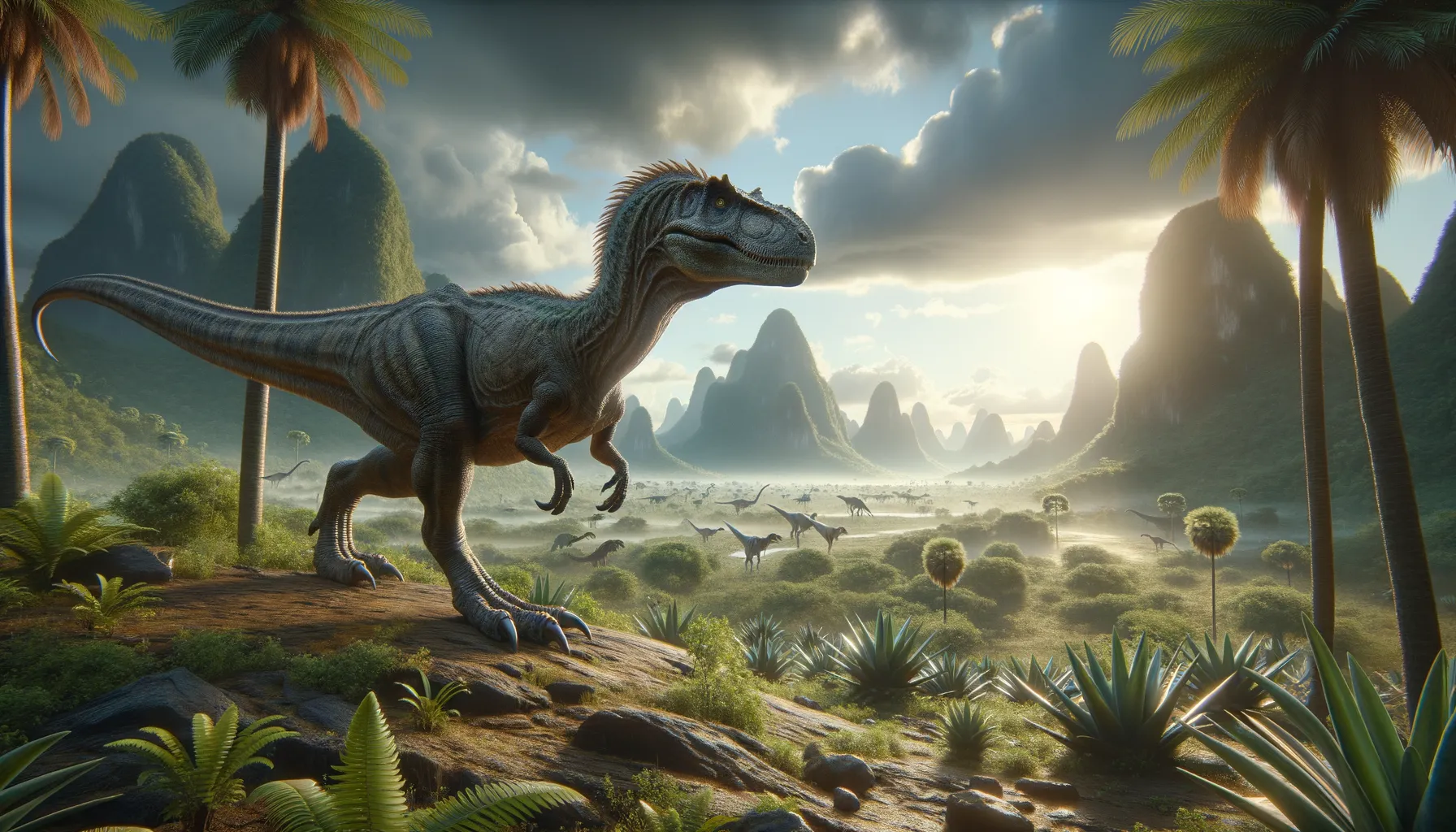
Phuwiangvenator
Savvy predator of the Cretaceous era.
Period
Cretaceous
Length
About 6 meters long.
Height
Close to 2 meters tall.
Weight
Approximately 450 kilograms.
Phuwiangvenator was a theropod dinosaur that roamed the ancient landscapes of what is now Thailand during the early Cretaceous period. Known for its agile body and efficient hunting skills, it is a fine example of mid-sized predatory dinosaurs. The discovery of its fossils has illuminated a greater understanding of dinosaur evolution in Asia and has fueled more explorations in the region to find its relatives.
Diet
As a carnivore, its diet included small to medium-sized animals. It likely preyed on other smaller dinosaurs and any available carrion.
Hunting
Phuwiangvenator utilized its agility and speed to chase down prey. Its sharp teeth and claws were well-suited for grasping and attacking its victims.
Environmental challenges
Living in a diverse landscape with varying climates required adaptability. Food scarcity during dry seasons would have been a challenge. Predators and competition for food would have influenced its survival strategies.
Speed
Moderately fast, agile hunter.
Lifespan
Potentially 20 to 30 years.
First discovery
Discovered in Thailand in 1993.
Fun Facts
- Phuwiangvenator is a dinosaur species that was discovered in Thailand, making it one of the few known Asian dinosaurs from the early Cretaceous period.
- This dinosaur is known for its impressive hunting capabilities, being a theropod, which means it was a bipedal carnivore.
- Phuwiangvenator's name is derived from the Phu Wiang National Park where its fossils were unearthed, combined with the word 'venator', meaning hunter.
- It roamed the Earth approximately 125 to 113 million years ago, sharing its habitat with other prehistoric creatures like crocodilians and fish.
- Phuwiangvenator is thought to have been about 6 meters long, making it a medium-sized predator of its time.
- The discovery of Phuwiangvenator has helped scientists understand more about the diversity of carnivorous dinosaurs in the Cretaceous period of Southeast Asia.
Growth and Development
Phuwiangvenator hatched from eggs, starting life in vulnerable conditions. As it grew, it developed stronger limbs and an efficient hunting strategy. Juveniles likely received some level of protection from adults, aiding survival.
Habitat
Its habitat consisted of semi-arid regions with periodic water sources. The presence of forests provided both shelter and hunting opportunities. The ecosystem was shared with a variety of flora and fauna.
Interaction with other species
Phuwiangvenator coexisted with herbivorous dinosaurs, which were its main prey. It needed to compete with other predators of similar size for food. Symbiotic relationships with scavengers were plausible, sharing leftovers.
Natural lifespan
In optimal conditions, lived up to around 30 years.
Reproduction
Egg-laying was the primary reproductive method. Nests were likely constructed in secluded areas to protect the vulnerable eggs. Parental care might have been present to increase the offspring's survival rate.
Social behaviour
While primarily solitary, temporary hunting groups could form. Displays of territorial behavior were likely when resources were scarce. Interaction with others of its kind involved rituals, possibly for mating or dominance.
Fossil locations
Fossil remains were primarily found in the Phu Wiang region of Thailand. These locations have provided significant insights into Cretaceous ecosystems. Continued excavation has the potential to uncover more about its kin and environmental context.
